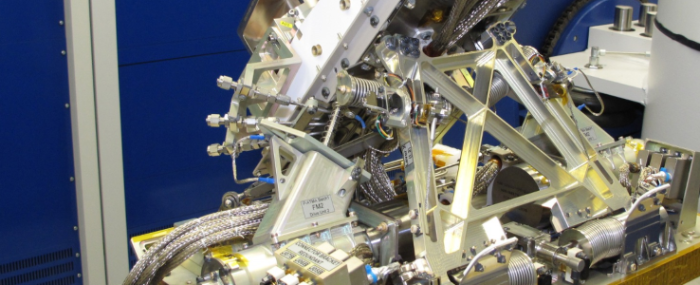
© RUAG
Electronics Production |
RUAG Space pointing mechanisms for telecommunications satellites
Based on a framework contract with satellite manufacturer Airbus Defence and Space in Toulouse, France, RUAG Space has supplied pointing mechanisms for electric propulsion thrusters for telecommunications satellites based on the Eurostar E3000 platform.
The first satellite equipped with such RUAG Space mechanisms, SKY Brasil-1, is due to be launched shortly, followed by a second, the SES-10, a few weeks later.
In early 2014, prime contractor Airbus Defence and Space awarded RUAG Space a multi-year framework contract to deliver such mechanisms for use on commercial telecoms satellites. The mechanisms delivered under this contract were developed while cooperating with Airbus on ESA technology programmes.
More and more geostationary satellites are being equipped with novel electric propulsion systems, in addition to traditional chemical thrusters, to help them maintain their orbital position (station keeping). This type of propulsion system generates only minimal thrust and the direction of thrust must be precisely controlled. This calls for pointing mechanisms that combine low mass, high structural rigidity, and high pointing accuracy.
Future telecommunications satellites based on the Eurostar E3000 platform from Airbus in Toulouse and equipped with both electric and chemical thrusters, operating in an orbit that requires precise north-south station keeping, will from now on be equipped with RUAG Space thruster pointing mechanisms. Two of these mechanisms will be installed in each satellite.
The planned launch window for the first of these satellites based on the Eurostar E3000 platform is the evening of 14 February, when a European Ariane 5 launch vehicle will carry two telecommunications satellites into space.
Once in orbit, SKY Brasil-1, equipped with two pointing mechanisms supplied by RUAG Space, will provide direct-to-home TV and other services to Brazil.
To date, RUAG Space has received orders for 10 pointing mechanisms under this contract, which represents a further major step in its ambitions to capture a growing share in the market for commercial applications of space technology. A necessary condition for this growth is the ability to develop innovative products within the framework of ESA contracts and to test them in space.


